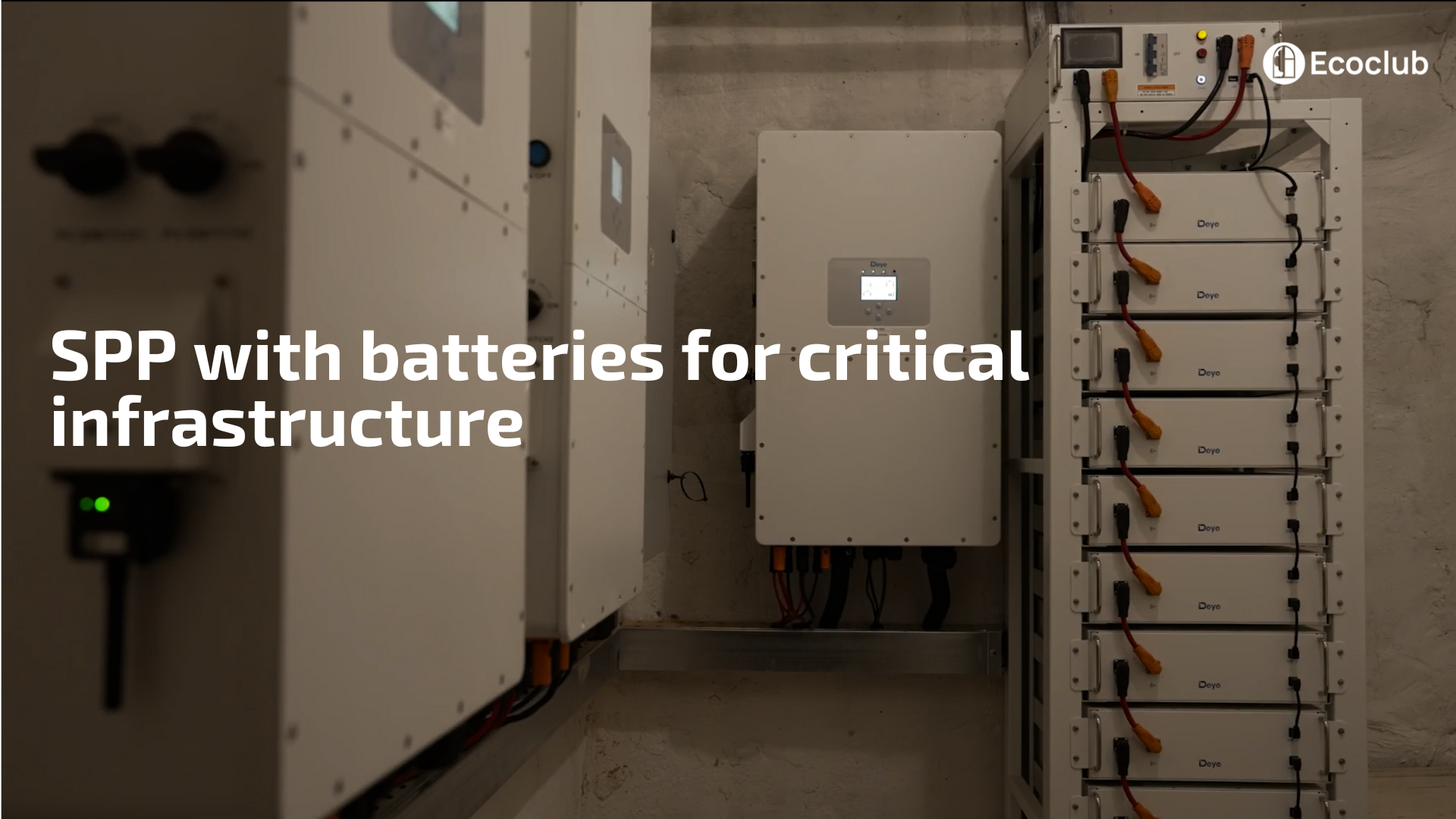In times of war and constant attacks on the energy system, critical infrastructure needs to have reliable sources of backup power. Hospitals, water utilities and other vital facilities need to operate without interruption, and partial or complete shutdowns can endanger people’s health or lives.
In communities most medical facilities are equipped with generators. Most medical facilities in communities are equipped with generators. However, they require constant maintenance, are expensive, and depend on fuel, which may be difficult to access due to the hostilities. An alternative to generators is solar power plants (SPPs) equipped with batteries. Although this solution requires significant initial investment, it is a long-term solution: the station will operate in the community for many years, meeting the needs of the institution and accumulating excess energy. We described below how much it will cost the community compared to a grid-connected solar power plant and what benefits it will bring.
Hybrid solar power plants and their role for water utilities
A stable power supply is needed for water utilities that provide a supply of drinking water and water drainage for residents. Without electricity, pumping stations do not operate, and so the water supply is stopped. Interrupted operation of wastewater treatment facilities can lead to environmental pollution and threats to public health.
Solar power plants with energy storage systems are an effective solution for continuous power supply to water utilities. This is an opportunity for the community to improve its energy security and invest budget funds profitably. The installed solar power plant will operate for the community for 20 years or more. According to Ecoclub’s calculations, the payback period for water utilities is 4.5 years or more, depending on the plant’s capacity and consumption.
SPPs are already solving the problem of access to water during critical situations. The stations installed in Bilhorod-Dnistrovskyi, Sumy, and Myrhorod allow local water utilities to operate autonomously for at least 1.5 hours and provide access to water for about 350,000 people in total in a critical situation.
An example of the effective operation of a hybrid solar station is the SPP for the Sumy water utility, which the community recently installed together with Ecoclub. During one of the emergency power outages, the station provided autonomous operation of one pumping station for four hours. This made it possible to fill the company’s reservoirs with water and supply water to all Sumy residents.
“In the Sumy community, 35,000 residents and 11 social infrastructure facilities receive drinking water from the Pryshybskyi water intake, so a stable electricity supply is important for providing basic services to consumers. The power plant has been in operation since early May 2024. Its capacity is 100.57 kW and the battery capacity is 81.6 kWh. The cost of the SPP was €135,500, which, according to preliminary estimates, will be paid off in just over six years,” says Rima Bykova, Deputy Mayor for Executive Bodies of Sumy City Council.
On-grid and hybrid solar power plants: work principles and difference
There are on-grid and hybrid solar power plants that communities install. They differ in work principles and have their own advantages and disadvantages.
An on-grid solar power plant is connected to general energy network. When it is sunny, SPP conducts electricity that can be used both for its own needs and supplied to the general grid. The main advantage of a grid-connected PV system is its ease of use and relatively low cost. However, in the event of a grid outage, such a station stops working. That is, it depends on the availability of centralised power supply.
At the same time, such stations can operate during outages together with generators. This will reduce the load on the grid and the amount of fuel needed to run the generators.
A hybrid solar power plant is a system that contains, besides the basic components of a SPP (panels and an inverter), also batteries. As a result, a hybrid station can operate autonomously, providing electricity to facilities when there is no access to the grid. This plays an important role for critical infrastructure, where every minute of shutdown can have significant consequences. Such systems are more expensive than on-grid PV systems but can operate during outages and when it is not sunny.
The cost of on-grid and hybrid solar power plants differs due to the different components of the plants and depends on the capacity.
For example, the approximate price of a 50 kW grid-tied PV plant can range from €38,000 to €50,000, depending on the equipment and installation costs. A hybrid SPP is more expensive because of the batteries and more complex inverter that support independent operation.
The cost of a 50 kW hybrid SPP will be higher due to the batteries. 1 kWh of batteries costs an average of 400-500 euros.
Safety that hybrid SPPs supply to hospitals
Medical facilities, especially in wartime, need a stable power supply to maintain vital equipment. Hybrid solar power plants play an important role in ensuring the continuous operation of hospitals.
One of the medical facilities that use SPPs as a source of backup power is a hospital in Sumy. The community first installed an on-grid solar station at this facility with Ecoclub’s support. Later, after evaluating the efficiency of the solar power plant, it was expanded and equipped with energy storage systems. This solution ensured the uninterrupted operation of the surgical department’s lift, which is used to transport patients and other important medical equipment.
“In winter, during power outages, we had to stop working and send patients for examination using other equipment. It is crucial for us to ensure a continuous treatment process when there is no electricity for a long time. The installed solar power plant will ensure the functioning of the operating and intensive care units during power outages,” says Valentyna Dominas, director of the hospital in Sumy.
The usage of SPPs with batteries increases the level of safety and comfort of Ukrainian communities and reduces dependence on external centralized energy sources. In the face of current challenges, this is a necessary step towards ensuring the stable operation of critical infrastructure, as renewable energy sources reduce the load on the grid and facilitate the operation of the power system. In addition, the development of renewable energy sources reduces dependence on fossil fuels and greenhouse gas emissions and contributes to the struggle against climate change.
The project ‘Renewable Energy for a Sustainable Ukraine’ is implemented by GIZ on behalf of the German Government.












